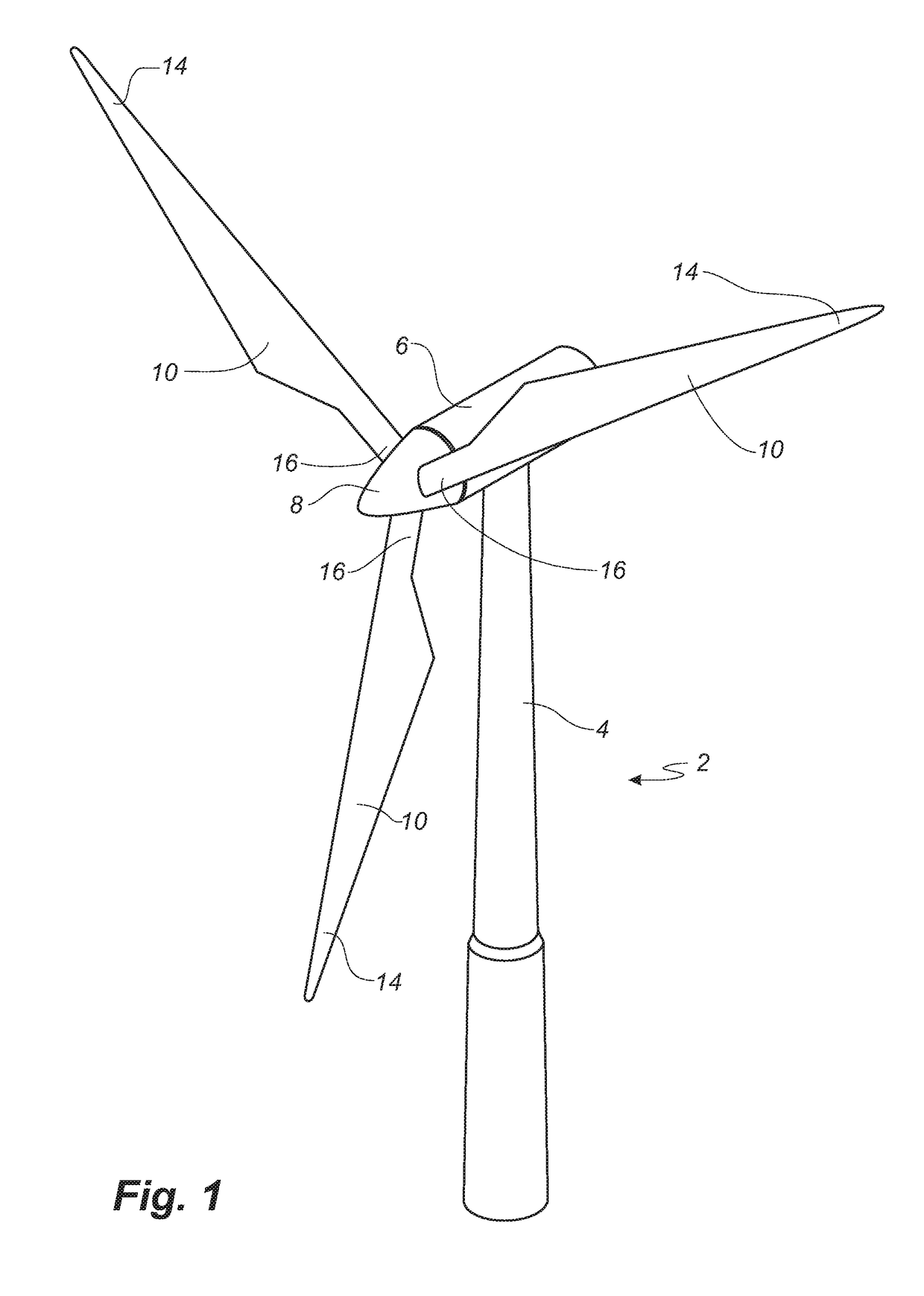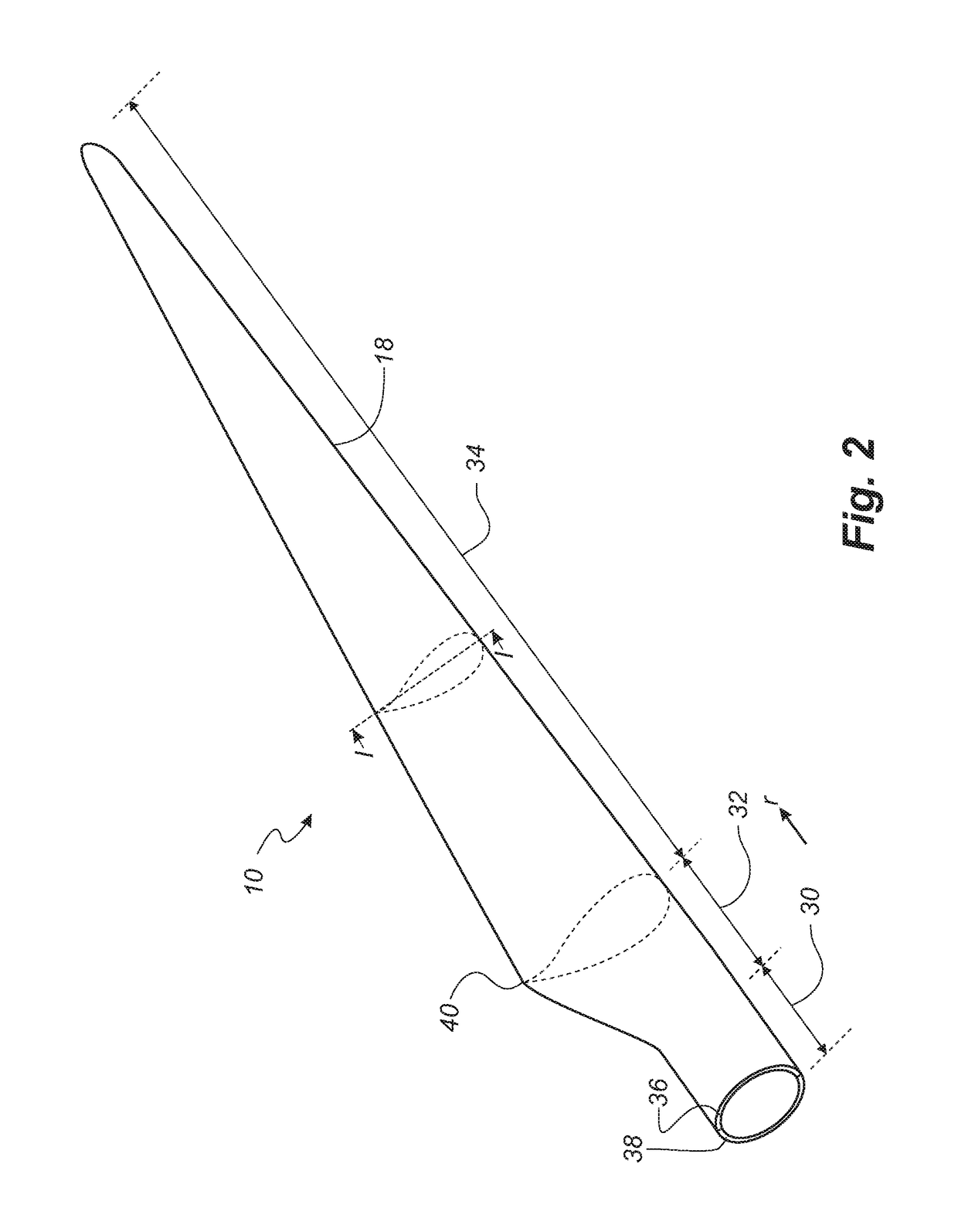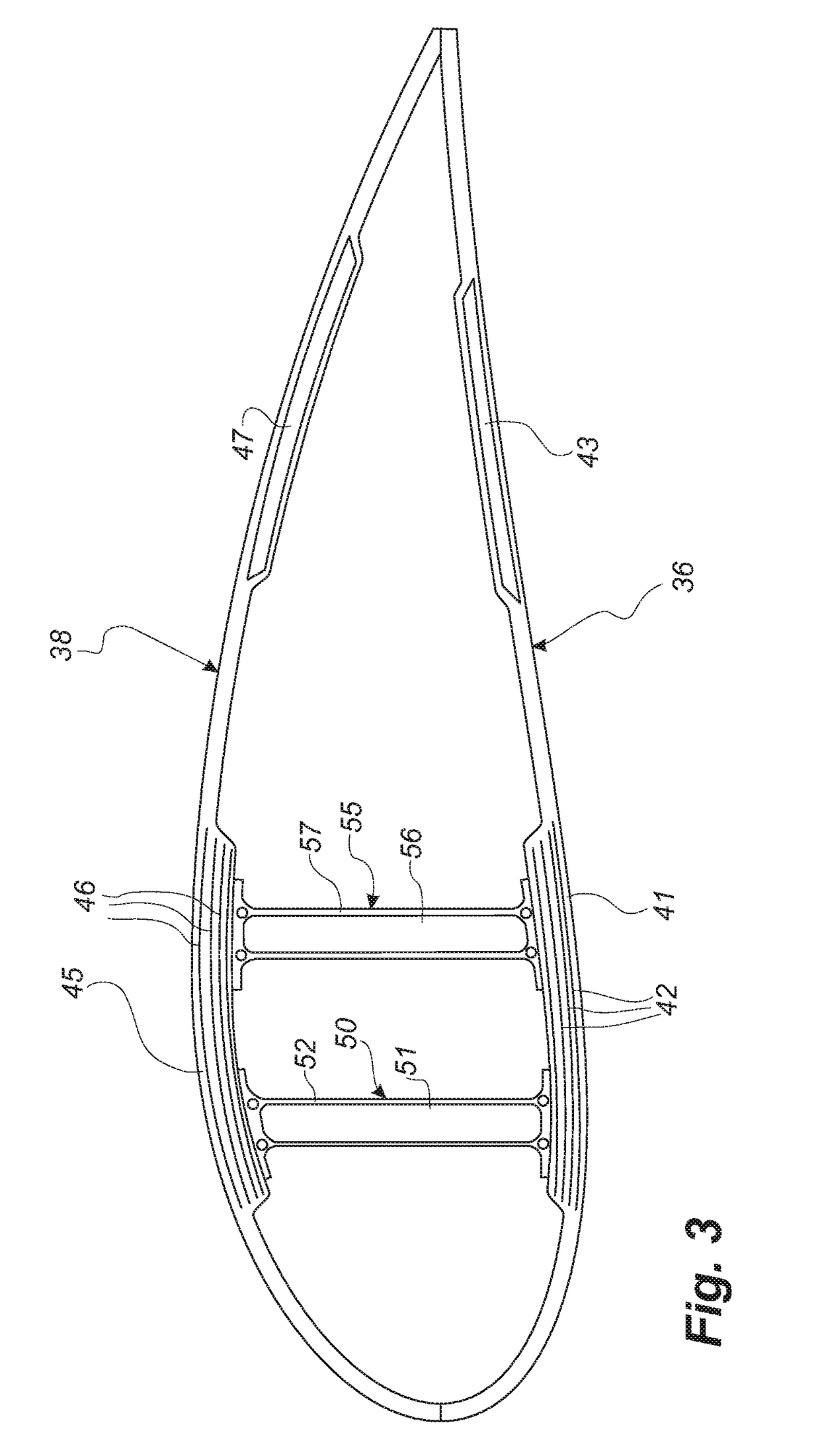A method of manufacturing a composite laminate structure of a wind turbine blade part and related wind turbine blade part
a technology of wind turbine blades and composite laminates, which is applied in the manufacture of final products, machines/engines, other domestic articles, etc., can solve the problems of reducing the conductivity between carbon fibre layers
- Summary
- Abstract
- Description
- Claims
- Application Information
AI Technical Summary
Benefits of technology
Problems solved by technology
Method used
Image
Examples
Embodiment Construction
[0025]Composite laminate structures of wind turbine blade parts can be manufactured by means of resin transfer moulding, preferably vacuum-assisted resin transfer moulding. In resin transfer moulding, the fibre-reinforcement material is impregnated with liquid resin in a mould cavity. The mould cavity is typically formed between a rigid mould part having a mould surface defining a surface of the wind turbine blade part and a flexible mould part. The resin disperses in all directions in the mould cavity as a flow front moves towards the resin-free area. It is thus important to promote flow of resin. To do so, the present disclosure proposes to add flow strips between the fibre layers in an inventive manner that promotes flow but does not reduce conductivity across the fibre layers. Such a balance is difficult to strike.
[0026]The present disclosure achieves this balance by alternately arranging or stacking fibre-reinforcing layers that are conductive and a flow strip layer that compri...
PUM
| Property | Measurement | Unit |
|---|---|---|
| electrically conductive | aaaaa | aaaaa |
| width | aaaaa | aaaaa |
| structure | aaaaa | aaaaa |
Abstract
Description
Claims
Application Information
 Login to View More
Login to View More - R&D
- Intellectual Property
- Life Sciences
- Materials
- Tech Scout
- Unparalleled Data Quality
- Higher Quality Content
- 60% Fewer Hallucinations
Browse by: Latest US Patents, China's latest patents, Technical Efficacy Thesaurus, Application Domain, Technology Topic, Popular Technical Reports.
© 2025 PatSnap. All rights reserved.Legal|Privacy policy|Modern Slavery Act Transparency Statement|Sitemap|About US| Contact US: help@patsnap.com



